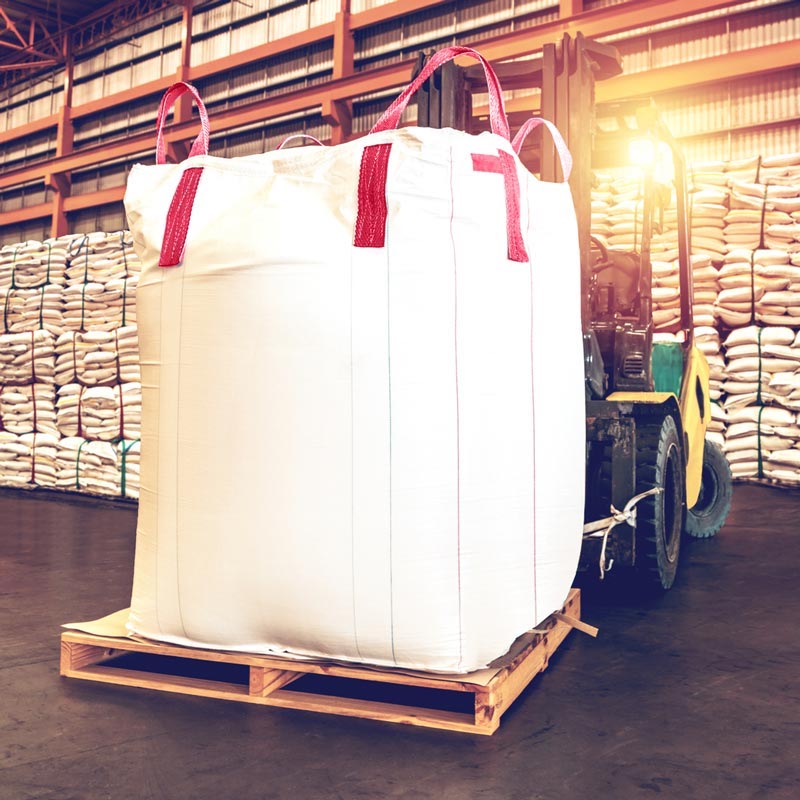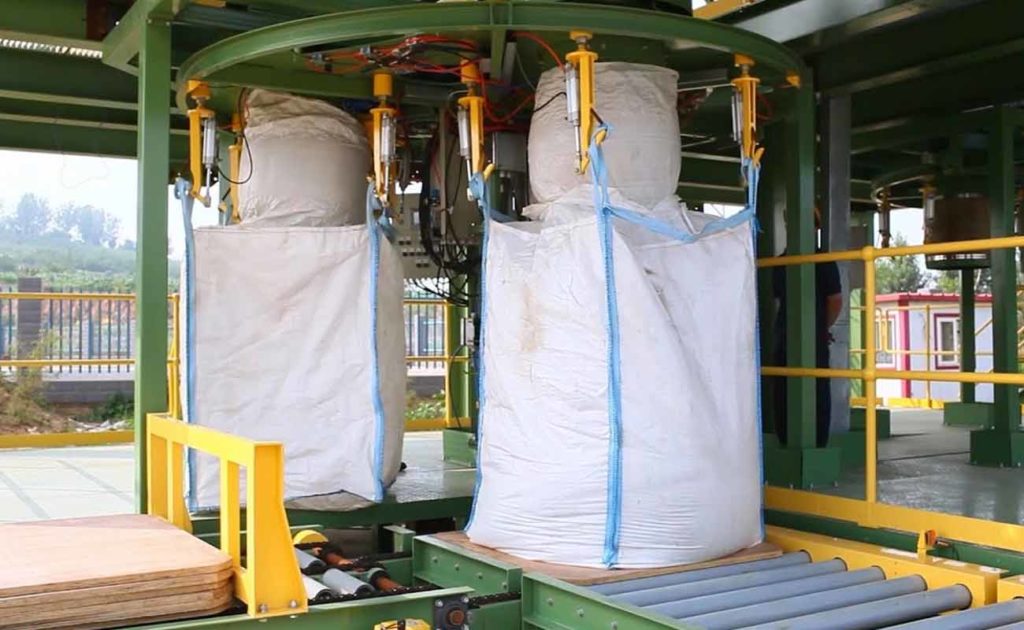Flexible Intermediate Bulk Containers (FIBC), commonly known as bulk bags or big bags, are indispensable in various industries for storing and transporting bulk materials. These bags are favoured for their durability, efficiency, and cost-effectiveness. However, to maximize these benefits and ensure safety, it’s crucial to fill them correctly. Proper filling practices not only prevent product loss and damage but also protect workers and equipment from potential hazards. This blog post delves into the significance of safe and secure filling of FIBC bags and outlines best practices to follow.
Why Proper Filling of FIBC Bags is Crucial
FIBC bags are designed to handle large volumes of materials, typically ranging from 500 kg to 2000 kg. The process of filling these bags might seem straightforward, but improper techniques can lead to a range of issues, including spillage, bag rupture, and uneven load distribution. These problems can result in financial losses, safety hazards, and operational inefficiencies.

Preventing Spillage and Product Loss
One of the primary concerns during the filling of FIBC bags is spillage. When bags are not filled correctly, materials can escape during filling, transport, or unloading, leading to significant product loss. This is particularly problematic when dealing with fine powders or granules, which can easily sift through small openings if the bag isn’t sealed or handled properly. Proper filling techniques ensure that the contents are securely contained, minimizing the risk of spillage and preserving the integrity of the product.
Ensuring Bag Stability and Load Distribution
Proper filling also ensures that the load inside the FIBC bag is evenly distributed. Uneven filling can cause the bag to become lopsided or unstable, which can be dangerous during lifting, transport, and stacking. An imbalanced bag is more likely to tip over, shift unexpectedly, or even rupture under pressure, posing a safety risk to workers and potentially damaging equipment. By following correct filling procedures, the bag maintains its shape and stability, making it safer and easier to handle.
Enhancing Worker Safety
The safety of workers is paramount in any industrial setting. Incorrectly filled FIBC bags can pose serious hazards, such as falls from imbalanced loads or injuries from sudden shifts or ruptures. Additionally, dust generated from improperly sealed bags can be harmful if inhaled, especially with certain materials like chemicals or food products. Proper filling practices reduce these risks by ensuring that bags are stable, secure, and properly sealed, creating a safer work environment for all involved.
Best Practices for Safe and Secure Filling of FIBC Bags
To ensure that FIBC bags are filled safely and effectively, it’s essential to follow established best practices. These guidelines help prevent common problems associated with improper filling and ensure that the bags perform as intended.
Choose the Right Type of FIBC Bag
Before filling, it’s important to select the appropriate FIBC bag for the material being handled. Different types of FIBC bags are designed for specific materials and conditions. For example, food-grade bags are used for edible products, while conductive bags are necessary for handling flammable materials. Understanding the properties of the material you are working with and choosing the right bag type helps prevent issues like contamination, static build-up, or material degradation.
Inspect the Bag Before Filling
Always inspect the FIBC bag before filling it. Look for any signs of damage, such as tears, holes, or weakened seams, which could compromise the bag’s integrity. Check the lifting loops and spouts to ensure they are intact and securely attached. Using a damaged bag increases the risk of spillage, rupture, and accidents during handling. By conducting a thorough inspection, you can identify and replace any defective bags before they become a problem.
Use Proper Filling Equipment
The equipment used to fill FIBC bags plays a crucial role in ensuring safety and efficiency. Automated filling systems are ideal because they provide consistent, controlled filling that helps prevent overfilling and ensures even load distribution. These systems can be calibrated to fill each bag to a precise weight, reducing the risk of human error. If manual filling is necessary, use equipment like support frames or filling stations that hold the bag securely in place during the filling process.
Fill Bags Evenly and to the Correct Capacity
When filling FIBC bags, it’s vital to distribute the material evenly throughout the bag to prevent imbalance. Start by ensuring that the bag is properly positioned and that the base is fully opened and supported. Fill the bag in stages, allowing the material to settle between each stage to avoid creating voids or uneven areas. Also, be mindful of the bag’s rated capacity and never exceed the safe working load (SWL). Overfilling can stress the bag’s seams and fabric, increasing the risk of rupture.
Seal the Bag Securely After Filling
After filling the FIBC bag, it’s essential to seal it securely to prevent spillage during handling and transport. Depending on the bag design, this may involve tying off the top spout, using a duffle closure, or sealing a liner. Make sure that all openings are closed tightly and that there are no gaps or loose areas where material could escape. A secure seal not only contains the material but also helps maintain the shape and stability of the bag.
Handle Filled Bags with Care
Even after filling, FIBC bags need to be handled with care to maintain safety and integrity. Use appropriate lifting equipment, such as forklifts or cranes with hooks designed for FIBC bags, and always lift from the loops provided. Avoid dragging or dropping filled bags, as this can cause damage or uneven distribution of the load. When stacking bags, follow manufacturer recommendations for stacking height and arrangement to ensure stability and prevent toppling.
Conclusion
Safe and secure filling of FIBC bags is essential for preventing product loss, ensuring worker safety, and maintaining operational efficiency. By choosing the right bag, inspecting it before use, employing proper filling techniques, and handling it with care, you can maximize the benefits of FIBC bags while minimizing risks. Following these best practices not only protects your products and employees but also contributes to a more efficient and cost-effective operation.
